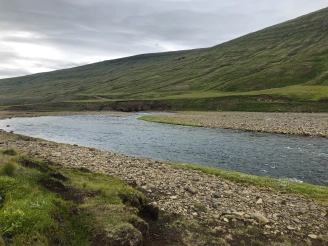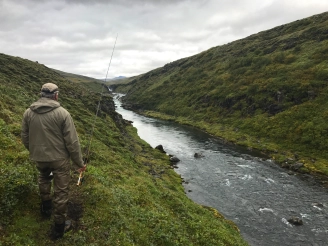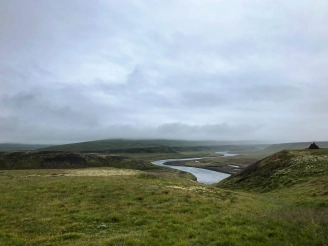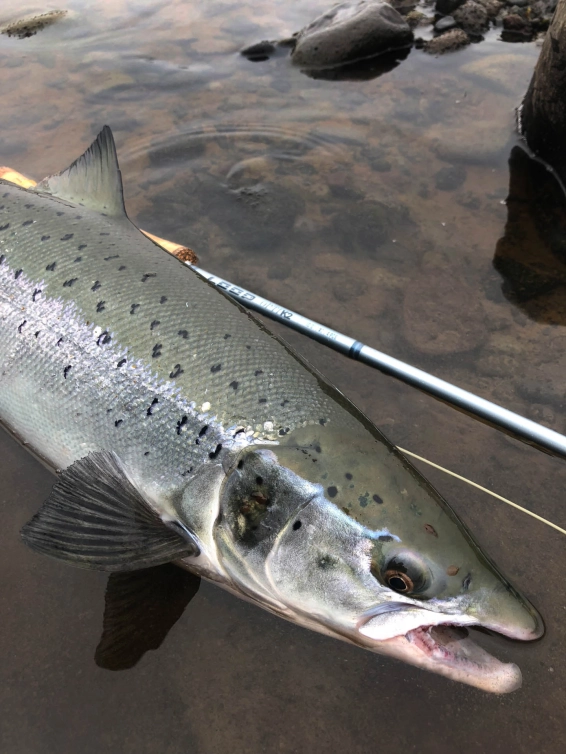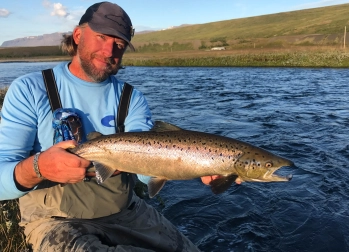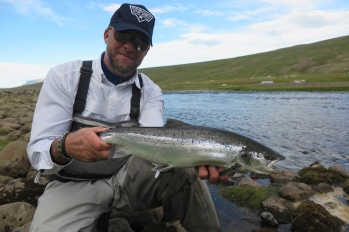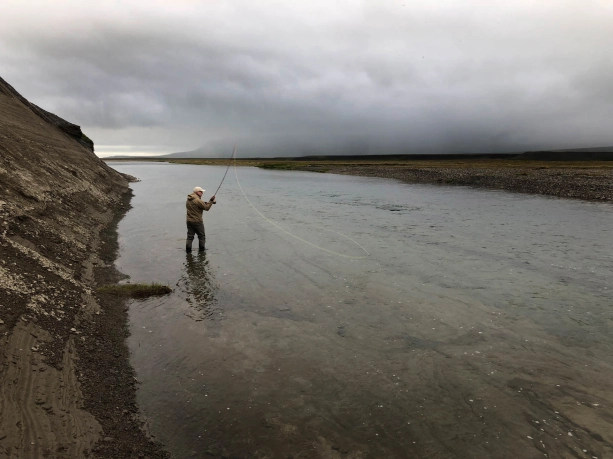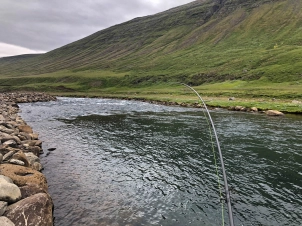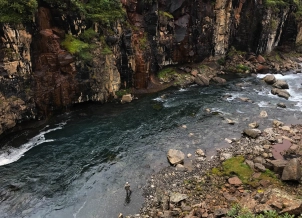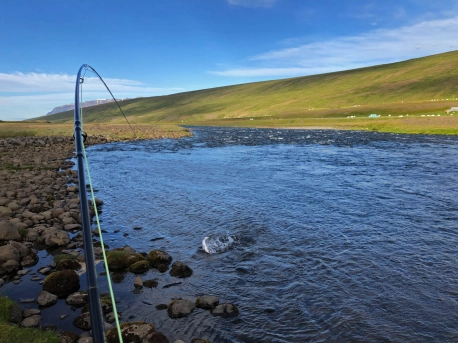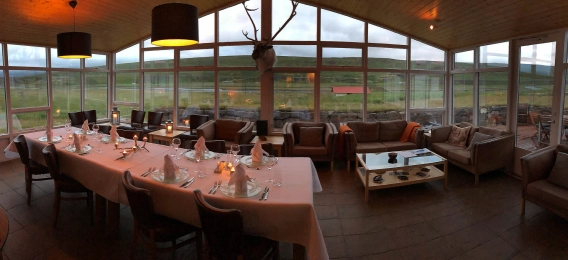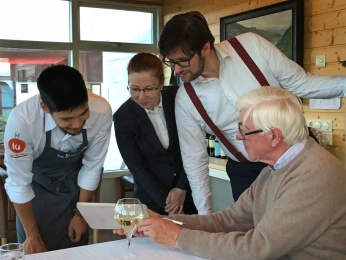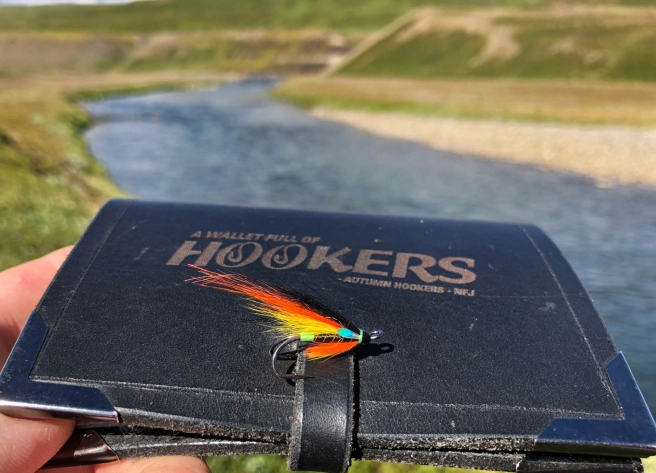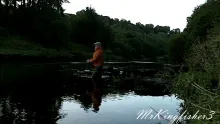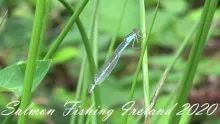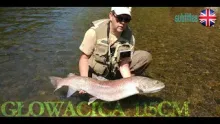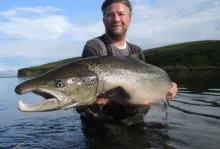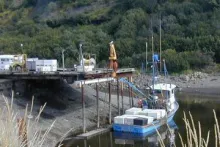There are quite a few rivers around Iceland claiming the queen crown. But there is only one Prince. Meet the river Hofsá
I fished a lot through the years here in Iceland and met many anglers on the rivers. Some new to our sport, others with a lifetime experience. Something I hear frequently from the experienced anglers is that the river Hofsá is the ultimate Atlantic salmon river if you are a fly fisherman. This even comes from anglers and guides fishing the mighty river Selá.
What makes Hofsá so special?
Both Hofsá and Selá
are located in east Iceland and even both have their estuary by Vopnafjordur. Both are among Iceland's most prolific rivers. They are both of magnificent beauty cutting through stunning landscape.
River Hofsá however offers some different characteristics compared to Selá. Hofsá generally has more shallow pools and few deep "worm pools", which are found on Selá. This is not saying that Selá is not a top river, because it surely is one of the nicest rivers in the world!
But for the angler who likes traditional swing fishing with small flies, Hofsá simply offers the best water a fly angler can dream off. Of course you can get the salmon out of the deep "worm pools" with several techniques including weighted tubes, but many of the experienced anglers I have met prefer fishing small flies being around size 18 to 12. Many also like the rifling hitch. I must admit that Hofsá is just an amazing river with this in mind. I have not fished a river with so much none-stop top fly water.
The salmon can run
30 kilometers up to the impassable fall named Foss 1. The upper beat, which is Beat 1, is a canyon beat with good possibilities for sight fishing. In the mid season, the famous pool Foss 2 is normally a very productive place to swing your fly, but all pools hold fish in a good year.
You have to walk up to the top fall and even cross the river to get to the opposite side where many of the upper pools must be fished from. Hofsá is a rather fast-flowing river, so crossing the river can be a challenge in some places. But where you can cross on Beat 1 to go to the upper part, the river keeper has put a rope across the river, making crossing much easier and safer.
Nils Folmer Jørgensen
The rest of the river is just an endless row of inviting pools. Most of them are fast flowing with well spread out boulders, offering many holding spots for the Salmon. There are also plenty of slower pools, which are perfect for the rifling hitch. Compared to many smaller Icelandic rivers, Hofsá has quite a few long pools giving many holding spots and of course fun for swinging the fly.
As already mentioned,
the river runs rather fast, and that's because its origin is way over sea level. But it is very clear where the pools are. You have classic fast, shallow flows and then a pool with calmer water where the fish rest. It is as classic as it gets.
Even though it is obvious where the fish will be holding, I still recommend starting with a guide. There is a lot of water on the Hofsá. The fish are challenging, but if you know where and how, you're in heaven here.
I have not fished Hofsá that much, but fell in love with it right away and got to feel the magic in July 2018. I fished July 15-18th, which is normally early prime time. The water level was perfect, the weather sunny and warm, which is said not to be ideal.
I had no personal guide but Hilmir Víglundsson who was guiding a friend helped me out with valuable tips on the many pools.
The good thing about fishing at this time is that you are after running fish. That means the a pool might be beaten by casting in the morning but in the evening, there are new fish there. Sometimes it's just a question of 30 minutes. So you want to visit some of the best pools several times during your rotation.
There are also many more pools "in" at this time, small areas which are considered running pools. These are pools where the fish will not stay for long, but just take a short rest before moving upstream to their destination. The fish are often very aggressive in these small pools. There are plenty of those places on the Hofsá.
I did not have high expectations
for the fishing, but already landed two sea liced Grilse the first evening in some smaller fast flowing pools in the upper middle river.
The next morning, I was fishing longer pools, but somehow sensed when that something was about to happen. There was the big rock right below the bridge in the Bridge Pool. I put a rifling hitch right in front the rock and as expected, a salmon rose and took it.
In the pool Wilson's Run, it was also obvious where the fish would be, and it was confirmed when a salmon jumped right on the hot spot while I was having a call on my cell phone. I put on the hitch fly during the call and actually hooked and landed the fish.
The home pool in front of the lodge was said to hold a big fish. I hooked a fish right where it had been seen, but it was not the big one.
A morning fishing, which was way better than expected.
I had a fantastic evening on Beat 7 which is the beat closest to the sea. I bumped into fish all over the place. My good friend Valli told me to try one of his favorite pools. I took a picture of the pool sign and send him. 5 minutes later, I sent him a video where I was fighting a fish in that very pool. 25 minutes later, one more! This evening was on fire! It gave me 5 Salmon, again going way beyond expectations.
The next morning
gave me one of the best takes of the season on Beat 6 in Wall Pool. When standing at the top of the pool, the neck in the back is in the shadow from the mountains, making it look dark and calm. It is rather deep on the neck but still easy to see two big rocks a few meters above the neck: one on the opposite side and one right in the middle.
It just had to hold fish.
When my Autumn Hooker fly size 10 ran in front of the opposite rock, I could see a wave come up behind it, but it went down again. I could sense that the fish was following the fly, and right at the middle rock, the salmon broke the surface and took the fly very hard.
This fish was big and very angry, but I won the battle and landed a sea liced male of 93 cm.
I ended these fishing days on Hofsá with 13 landed salmon, which was more than I had hoped for. After some tough years on the river, it shows that Hofsá is coming back.
It was a cracking experience fishing all the way down through the canyon to where the landscape flattens out, but the river is still hidden in a beautiful valley. Of course it does not hurt to pick up some fish on the trip down.
I'm hooked on this river
for sure, and it among my favorites. I also love the fact that there is 30 km of water and only 7 rods fishing it, giving endless space per rod. It is impossible to fish all pools on each rotation.
Hofsá is like most Icelandic rivers a 6 hour rotation per session: a morning and an evening rotation/session of 6 hours each. Most of us are more than fine with 5 hours fishing per session.
Primetime is mid July to mid August.
The Hofsá is famous for also having runs of fresh fish in September, which is unique for this river. In September the licenses are one third of prime time prices.
The only minus about Hofsá is that there are 7 beats and 7 rods. On the 3 days you normally fish, you only get 6 rotations and therefor 6 beats meaning you will miss out one beat. It would make sense to make it a 6 rod river.
The lodge and food is good. One private room per rod unless you share a rod. Then you share room. Service is fantastic. Only thing missing at the lodge is a hot pot.
Tackle choice
is always a question of taste but for me, this is a river where you should leave your ultra stiff rods at home along with the long two handers. The main reason is that you are fishing mostly small flies, which will pull out and straighten easily when setting the hook with a stiff rod or a double handed rod.
The reason why I don't use two hand rods is like on many Icelandic rivers that the line is much heavier than the line on a single hand rod. There is more splashing when you cast, and the line makes more noise when landing in the shallow water.
Fishing is like hunting: you have to stay low and silent.
My choice is a 9,6 feet #7 single hand rod with medium casting action rigged with a floating line and around 12 feet of tapered leader ending in a 0.30 mm fluorocarbon tippet. I also fish a lot with an 11 feet #7 switch rod. Note this is not a US switch rod which has the same casting weight as a real double hander. Mine is a Loop NXT, which is closer to a single hand rod with regards to casting weight. This means I can spey cast it, cover lots of water easily and still fish small flies and work silently. The rod has same line set-up is my single handed rod.
I have by far had most success
with my own pattern called Autumn Hooker, which has to be tied with Icelandic horse hair. In July I fish with it in a rather big size - a #10. Later in the season, a size 14 is more effective.
The rifling hitch is very productive here, but requires more technical skills. The constant focus and visual takes makes it the most fun technique. Sometimes it's the only thing that works.
Safe bets on flies are: Autumn Hooker, Erna, Haugur, Colburn Special, Sunray Shadow tubes, hitch and the Frances Flies.
Facts
Location: About 600 km east from Reykjavik. Flights are available to Vopnafjordur.
Fishing season: 24th of June - 22th of September.
Average catch: 1,100 salmon per season.
Number of rods: 7
Lodge: Full service
Notes: All Salmon over 69 cm must be released
Fly only
Info: www.strengurangling.is
- Log in to post comments

